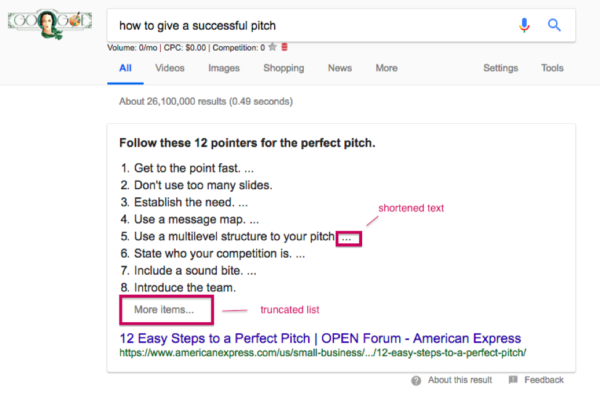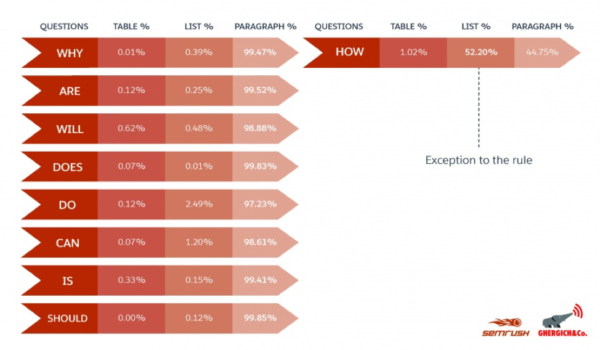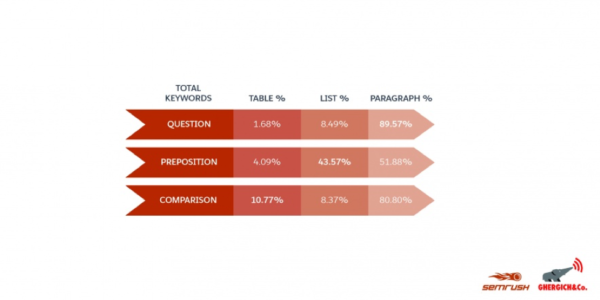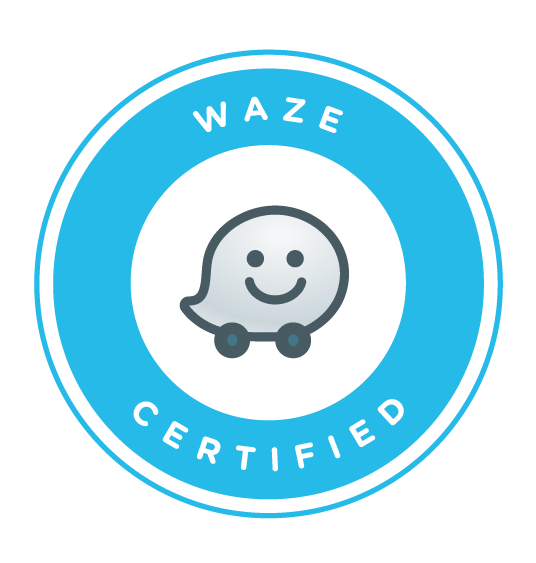
Appearing in Google’s featured snippets section is a great way of boosting traffic to your site. Given that they aim to answer a searcher’s question immediately, they mark your website out as informative and trustworthy – especially given that Google chooses which pages rank for these featured snippets. But how exactly can your business rank for these positions on the search page? Are there any tips? According to a recent study by SEMrush and Ghergic & Co. there is, and we are going to break it down for you!
Keyword Questions
It is no secret that the keywords you use will have an impact on how you rank. However, according to the study, in which over 6.9 million featured snippets and 80 million keywords were analysed, it was keywords that contained questions that were most successful in ranking for keyword snippets. In fact, over 41% of keyword phrases with questions ranked for featured snippets, demonstrating a 480% increase in the percentage of keywords with featured snippets. However, it is important that you think about which question keywords you are aiming to rank for as, while most questions (e.g.‘are’, ‘should’, ‘will’ and ‘why’) are successful in ranking for featured snippets, ‘how’ is much less effective:
Consider Where Keywords Are Included
While the presence of keywords is important, the way in which they are used is also significant when it comes to ranking for featured snippets. In fact, whether you are aiming to rank for prepositional keywords, comparison keywords or question keywords, you should consider where you are using them. The SEMrush study shows that certain keywords work best when used in a list, others in tables and others in paragraphs on the page:
However, aside from using the correct type of keywords in the correct format to optimise for featured snippets, it is also important that you optimise the actual content on the pages you want to feature as these snippets. In terms of content optimisation, you should consider:
Consider Content Length
The ideal length of your content will depend on whether you are presenting it in a paragraph, list or table.
When it comes to paragraphs, the best content for featured snippets will be succinct and clear, providing key information in a minimalist format. You should aim to create a paragraph of between 42 and 60 words, ideally.
For both lists and tables, you should aim to create longer, more detailed content in order that Google will be forced to truncate your results. It can also be a good idea to make each point of the list or table long enough that Google will shorten these, too. This will give searchers a reason to click onto your link, exploring and engaging with your site further.

However, it is important to consider your reader at all times. If searches are looking for straight-to-the-point information, a short and simple table or list is fine. Your ultimate aim should be to please your potential customers, rather than simply to rank for these featured snippets.
Use Media Wisely
You cannot expect generic stock images to help your content to rank for featured images, and neither can you expect images of any size and resolution to do well. When it comes to ranking for featured snippets, it is not the quantity of the media, but the quality and how useful it is to your audience at demonstrating and reinforcing what you are trying to explain. As for image size, SEMrush found that the most common aspect ratio was 4:3, with the average pixel size in featured snippets was 600w x 425h. The study also revealed that landscaped images work best for featured snippets, as they appear less pixelated when Google scales them down. You should also add alt tags to any images that appear on your page, as this will give Google a better idea of what these images contain.

As part of the study, SEMrush also looked at some featured snippet examples, all of which had 10 or more featured snippets for a single URL. The sample of these 3800 URLs had:
- Mobile friendly pages. In fact, the average mobile friendly score was 95/100;
- Easy to use pages. Examples averaged 96/100 usability score;
- Adopted HTTPS;
- An average of 14 alt tag images per URL;
- Social activity;
- A variety of ordered and unordered lists
It is important to remember that these factors, as well as the factors mentioned above, are more about correlation, rather than causation. However, if your competitors are using these techniques in an attempt to rank for featured snippets, you should be, too.
If you have any questions about features snippets, or would like to help your business to rank better in search, please contact us today on 01603 343477.







